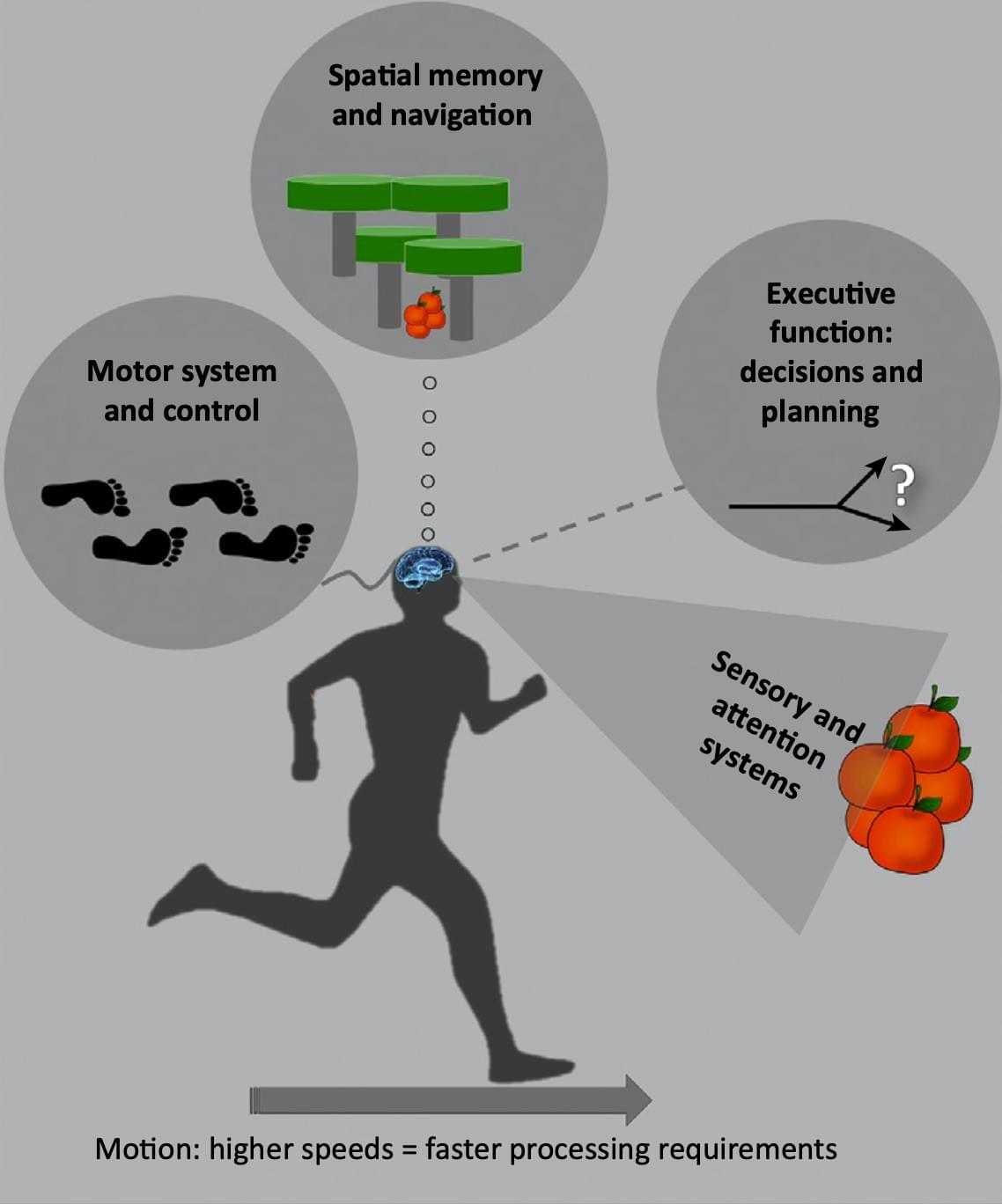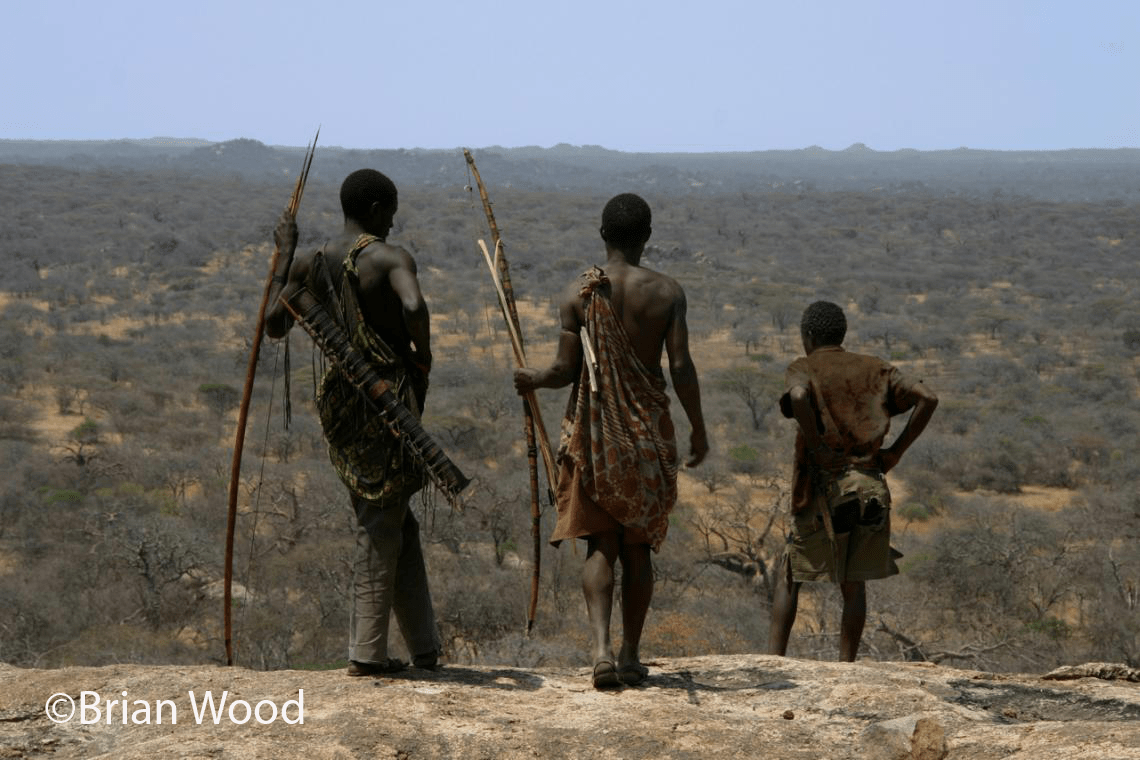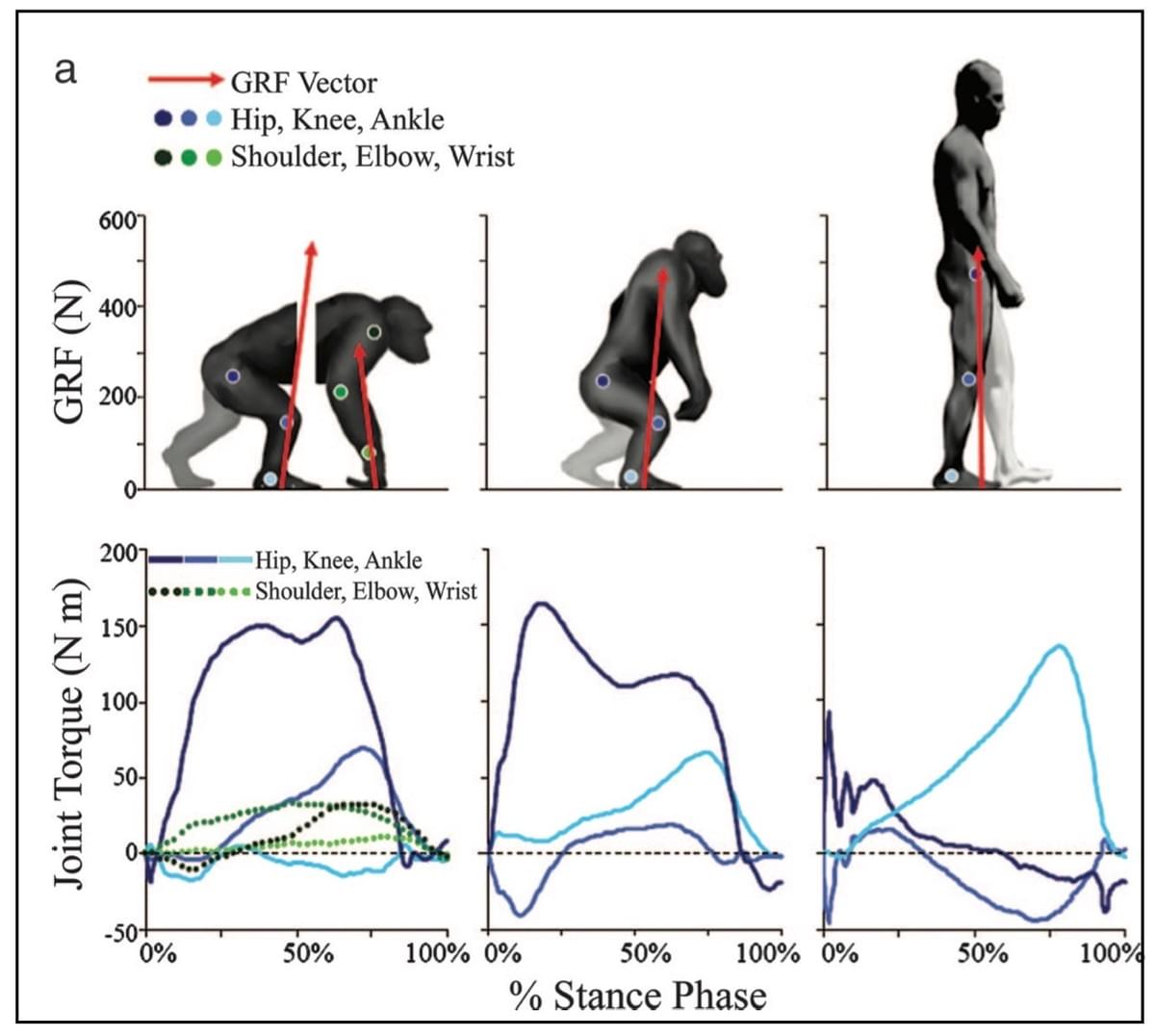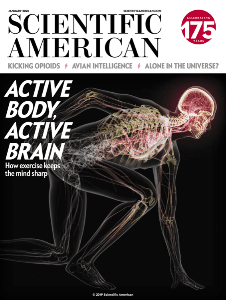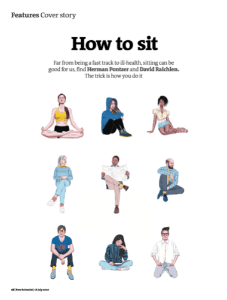
Evolutionary Biology of Physical Activity Lab
Evolutionary Biology of Physical Activity Lab
Evolutionary Biology of Physical Activity Lab
Evolutionary Biology of Physical Activity Lab
We link the evolution of high physical activity in humans to health and well-being today using an array of methods ranging from laboratory biomechanics, epidemiology, neuroscience, and field studies of human foraging populations. We hope to apply evolutionary models to improve health today.
Our lab is in the Human and Evolutionary Biology Section of the Department of Biological Sciences at the University of Southern California.

RESEARCH
Our lab is focused on understanding how humans' unique evolutionary history explains modern human physiological variation and how we can use an evolutionary context to improve health and well-being today. Specifically, we argue that a shift towards high levels of physical activity during our transition to hunting and gathering in the past led to a physiological requirement for physical activity to maintain the health of organ systems from our brains, to our cardiovascular system, to our musculoskeletal system. While we explore the links between human evolution, physical activity, and health across the lifespan, we believe this perspective can play a major role in preventing and managing diseases that occur late in life. In the end, a full understanding of our evolutionary history will help explain how and why our current, more sedentary lifestyle impacts our physical and mental health, and how we can use this evolutionary context to improve well-being today.
Our research program has three main components:
1) Reconstructing activity levels during human evolution (evolutionary biomechanics)
2) Exploring energetics and physical activity levels in extant taxa, including human hunter-gatherers
3) Linking the evolution of high physical activity levels to physiology, neurobiology, and health in extant humans
Evolutionary links between physical activity, sedentary behavior, and brain health
Our lab is interested in the interaction between physical activity, neurobiology, and physiology in extant taxa, including humans. Work in our lab (and others) suggests that aerobic activity increased greatly during human evolution. We are currently examining the effects of endurance exercise on the evolution of the human brain with a specific focus on how and why physical activity improves cognitive health across the lifespan. Current projects include:
- Interventions combining exercise and cognitive challenges to improve cognition and brain health
- Use of wearables to assess associations between physical activity, inactivity, and Alzheimer's disease risk
- Using an evolutionary genomics approach to determine how selection linked physical activity and brain health across human evolution
Physical activity, sedentary behaviors, health, and aging in hunter-gatherers
Energy use is a main target of natural selection and our lab is involved in several projects examining physical activity and inactivity in humans living in small-scale societies. These projects are all aimed at understanding how changes in physical activity and sedentary behavior affected human evolutionary physiology and disease risk. Many of these projects involve field studies using accelerometry and other objective methods to measure physical activity levels. Recent projects include:
- Physical activity and inactivity in human hunter-gatherers assessed with objective methods (accelerometers, heart-rate monitors, gps, etc.)
- Total energy expenditures in human hunter-gatherers
- Biomarkers of health and chronic disease in small-scale societies
- Cognitive aging in hunter-gatherers
Evolutionary Biomechanics and Physiology
Our lab uses comparative biomechanics and physiology to reconstruct patterns of physical activity during human evolution. Our basic approach is to identify links between anatomy and locomotor performance (speed, energy costs, endurance, etc.) in living taxa. We use these links to understand locomotor performance in the fossil record. Recent projects include:
- Linking músculo-skeletal morphology with walking and running performance including reconstructing running economy in human ancestors
- Using evolutionary biomechanics to test the endurance running hypothesis
PEOPLE

David Raichlen, Ph.D.
Professor
Human and Evolutionary Biology Section
Department of Biological Sciences
University of Southern California
Twitter: @DavidRaichlen

Ph.D. Student
Integrative and Evolutionary Biology Graduate Program
Department of Biological Sciences
University of Southern California
Twitter: @anamika_nanda_

Ph.D. Student
Integrative and Evolutionary Biology Graduate Program
Department of Biological Sciences
University of Southern California
Twitter: @DanielAslan5

Ph.D. Student
Integrative and Evolutionary Biology Graduate Program
Department of Biological Sciences
University of Southern California
Twitter: @hourihan_sarah
Join Us
The Evolutionary Biology of Physical Activity Lab is accepting graduate students. If you are interested in graduate studies, we accept students through the Integrative and Evolutionary Biology program at USC. Please contact us and tell us about your research interests below.
PUBLICATIONS
If you would like a pdf copy of any of the papers below, please contact us directly.
2025
Yu, Q., Zhang, Z., Ludyga, S., Erickson, K. I., Cheval, B., Hou, M., . . . Falck, R. S. Effects of physical exercise breaks on executive function in a simulated classroom setting: uncovering a window into the brain. Journal, 12: 2406631.
Song, H., Bharadwaj, P. K., Grilli, M. D., Raichlen, D. A., Habeck, C. G., Huentelman, M. J., . . . Alexander, G. E. Subcortical brain volumetric differences related to white matter lesion volume and cognition in healthy aging. Journal, 11: 1-10.
Raichlen, D. A., Aslan, D. H., Sayre, M. K., Nanda, A., Bharadwaj, P. K., Ally, M., . . . Klimentidis, Y. C. Associations between the 24-Hour Activity Daily Cycle and Incident Dementia. Journal.
Nolin, S. A., Faulkner, M. E., Stewart, P., Fleming, L. L., Merritt, S., Rezaei, R. F., . . . Jessup, C. J. Network segregation is associated with processing speed in the cognitively healthy oldest-old. Journal, 14: e78076.
Maltagliati, S., Raichlen, D. A., Rhodes, R. R. and Cheval, B. Closing the intention-behavior gap in physical activity. Journal, 30: e12790.
Maltagliati, S., Aslan, D. H., Sayre, M. K., Bharadwaj, P. K., Ally, M., Lai, M. H., . . . Raichlen, D. A. Nonlinear Associations of Accelerometer-Based Sedentary Time With Cognitive Functions in the UK Biobank. Journal, 80: gbaf071.
Hargrave, S. H., Bray, E. E., McGrath, S., Alexander, G. E., Block, T. A., Chao, N., . . . Kennedy, B. S. Characterizing dog cognitive aging using spontaneous problem-solving measures: development of a battery of tests from the Dog Aging Project. Journal, 47: 23-43.
Britton, M. K., Jensen, G., Edden, R. A., Puts, N. A., Nolin, S. A., Merritt, S. S., . . . Bharadwaj, P. K. “Surviving and Thriving”: evidence for cortical GABA stabilization in cognitively-intact oldest-old adults. Journal, 15: 79.
Bajunaid, R., Niu, C., Hambly, C., Liu, Z., Yamada, Y., Aleman-Mateo, H., . . . Bandini, L. Predictive equation derived from 6,497 doubly labelled water measurements enables the detection of erroneous self-reported energy intake. Journal: 1-14.
Aslan, D. H., Sayre, M. K., Bharadwaj, P. K., Ally, M., Maltagliati, S., Lai, M. H., . . . Raichlen, D. A. Associations Between Walking Pace, APOE-ε4 Genotype, and Brain Health in Middle-Aged to Older Adults. Journal.
Arani, G., Arora, A., Yang, S., Wu, J., Kraszewski, J. N., Martins, A., . . . Hu, C. Plasma Proteomic Signatures of Physical Activity Provide Insights into Biological Impacts of Physical Activity and its Protective Role Against Dementia. Journal: 2025.01. 16.25320290.
2024
Raichlen, D.A., Ally, M., Aslan, D.H., Sayre, M.K., Bharadwaj, P.K., Maltagliati, S., Lai, M.H., Wilcox, R.R., Habeck, C.G., Klimentidis, Y.C. and Alexander, G.E. Associations between accelerometer‐derived sedentary behavior and physical activity with white matter hyperintensities in middle‐aged to older adults. Alzheimer's & Dementia: Diagnosis, Assessment & Disease Monitoring, 16:p.e70001.
Wood, B.M., Raichlen, D.A., Pontzer, H., Harris, J.A., Sayre, M.K., Paolo, B., Anyawire, M. and Mabulla, A.Z. Beyond the here and now: hunter–gatherer socio-spatial complexity and the evolution of language. Philosophical Transactions of the Royal Society B 1912: 20220521.
Zou, L., Herold, F., Cheval, B., Wheeler, M.J., Pindus, D.M., Erickson, K.I., Raichlen, D.A., Alexander, G.E., Müller, N.G., Dunstan, D.W. and Kramer, A.F. Sedentary behavior and lifespan brain health. Trends in Cognitive Sciences.
Feter N, de Paula D, Dos Reis RC, Raichlen D, Patrão AL, Barreto SM, Suemoto CK, Duncan BB, Schmidt MI. Leisure-Time Physical Activity May Attenuate the Impact of Diabetes on Cognitive Decline in Middle-Aged and Older Adults: Findings From the ELSA-Brasil Study. Diabetes Care. dc231524.
Raichlen, D.A., Klimentidis, Y.C. and Alexander, G.E., 2024. Sedentary Behavior and Dementia—Reply. JAMA, 331: 443-443.
Song, H., Bharadwaj, P.K., Raichlen, D.A., Habeck, C.G., Grilli, M.D., Huentelman, M.J., Hishaw, G.A., Trouard, T.P. and Alexander, G.E. Cortical lobar volume reductions associated with homocysteine-related subcortical brain atrophy and poorer cognition in healthy aging. Frontiers in Aging Neuroscience, 16:1406394.
Hargrave, S. H., Bray, E. E., McGrath, S., Alexander, G. E., Block, T. A., Chao, N., ... Raichlen. D.A….& MacLean, E. L. Characterizing dog cognitive aging using spontaneous problem-solving measures: development of a battery of tests from the Dog Aging Project. GeroScience, 1-21.
Ho, B.D., Gullett, J.M., Anton, S., Franchetti, M.K., Bharadwaj, P.K., Raichlen, D.A., Alexander, G.E., Rundek, T., Levin, B., Visscher, K. and Woods, A.J., Associations between physical exercise type, fluid intelligence, executive function, and processing speed in the oldest-old (85+). GeroScience, 46(1), pp.491-503.
Van Etten, E.J., Bharadwaj, P.K., Grilli, M.D., Raichlen, D.A., Hishaw, G.A., Huentelman, M.J., Trouard, T.P. and Alexander, G.E., Regional covariance of white matter hyperintensity volume patterns associated with hippocampal volume in healthy aging. Frontiers in Aging Neuroscience, 16:1349449.
Ramadan, F.A., Arani, G., Jafri, A., Thompson, T., Bland, V.L., Renquist, B., Raichlen, D.A., Alexander, G.E. and Klimentidis, Y.C., Mendelian Randomization of blood metabolites suggests circulating glutamine protects against late-onset Alzheimer’s disease. Journal of Alzheimer's Disease, pp.1-10.
2023
Raichlen DA, Aslan DH, Sayre MK, Bharadwaj PK, Ally M, Maltagliati S, Lai MH, Wilcox RR, Klimentidis YC, Alexander GE. Sedentary behavior and incident dementia among older adults. JAMA. 330:934-40.
Sayre, M. K., Anyawire, M., Paolo, B., Mabulla, A. Z., Pontzer, H., Wood, B. M., & Raichlen, D. A. Lifestyle and patterns of physical activity in Hadza foragers. American Journal of Biological Anthropology, 182: 340-356.
Cheval, B., Darrous, L., Choi, K.W., Klimentidis, Y.C., Raichlen, D.A., Alexander, G.E., Cullati, S., Kutalik, Z., Boisgontier, M.P. Accelerometer-measured physical activity and cognitive functioning: A mendelian randomization study. Scientific Reports. 13: 5310
Bray, E.E., Raichlen, D.A., Forsyth, K.K., Promislow, D.E.L., Alexander, G.E., MacLean, E.L., Associations between physical activity and cognitive dysfunction in older companion dogs: Results from the Dog Aging Project. Geroscience. 45: 645-661.
Trumble, B.C., Pontzer, H., Stieglitz, J., Cummings, D.K., Wood, B., Emery Thompson, M., Raichlen, D.A., Beheim, B., Yetish, G., Kaplan, H. and Gurven, M., 2023. Energetic costs of testosterone in two subsistence populations. American Journal of Human Biology, p.e23949.
Song H, Bharadwaj PK, Raichlen DA, Habeck CG, Huentelman MJ, Hishaw GA, Trouard TP, Alexander GE. Association of homocysteine-related subcortical brain atrophy with white matter lesion volume and cognition in healthy aging. Neurobiology of Aging. 121:129-38.
Nolin, S.A., Cowart, H., Merritt, S., McInerney, K., Bharadwaj, P.K., Franchetti, M.K., Raichlen, D.A., Jessup, C.J., Hishaw, G.A., Van Etten, E.J. and Trouard, T.P., 2023. Validity of the NIH toolbox cognitive battery in a healthy oldest-old 85+ sample. Journal of the International Neuropsychological Society, 29, pp.605-614.
Speakman, J. R., et al. (2023). Total daily energy expenditure has declined over the past three decades due to declining basal expenditure, not reduced activity expenditure. Nature Metabolism, 5, 579-588.
Ho, B.D., Gullett, J.M., Anton, S., Franchetti, M.K., Bharadwaj, P.K., Raichlen, D.A., Alexander, G.E., Rundek, T., Levin, B., Visscher, K. and Woods, A.J., 2023. Associations between physical exercise type, fluid intelligence, executive function, and processing speed in the oldest-old (85+). GeroScience
2022
Raichlen, D.A. & Lieberman, D.E. The evolution of human step counts and its association with the risk for chronic disease. Current Biology. 32: R1206-R1214
Raichlen DA, Klimentidis YC, Sayre MK, Bharadwaj PK, Lai MHC, Wilcox RR, Alexander GE. Leisure-time sedentary behaviors are differentially associated with all-cause dementia regardless of engagement in physical activity. Proceedings of the National Academy of Sciences
Song, H., Bharadwaj, P.K., Raichlen, D.A., Habeck, C.G., Huentelman, M.J., Hishaw, G.A., Trouard, T.P., Alexander, G.A. Homocysteine-related network covariance pattern of subcortical gray matter volumes in healthy aging. Neurobiology of Aging. 121: 129-138
Ramadan, F., Bea, J.W., Garcia, D.O., Ellingson, K., Canales, R.A., Raichlen, D.A., Klimentidis, Y.C. Association of Sedentary and Physical Activity Behaviors with Body Composition: a Genome-Wide Association and Mendelian Randomization Study. BMJ Open Sport & Exercise Medicine
Raichlen, D.A., Furlong, M., Klimentidis, Y.C., Sayre, M.K., Parra, K.L., Bharadwaj, P.K., Wilcox, R.R., Alexander, G.E. Association of physical activity with incident dementia is attenuated by air pollution. Medicine and Science in Sports and Exercise
Klimentidis, Y.C., Newell, M., van der Zee, M.D., Bland, V.L., May-Wilson, S., Arani, G., Menni, C., Mangino, M., Arora, A., Raichlen, D.A., Alexander, G.E., Wilson, J.F., Boomsma, D.I., Hottenga, J.J., de Geus, E.J.C., Pirastu, N. Genome-wide association study of liking of physical activity in the UK Biobank. Medicine and Science in Sports and Exercise.
Furlong, M.A., Alexander, G.E., Klimentidis, Y.C., Raichlen, D.A. Air pollution is associated with brain structure and modified by physical activity: findings from the UK Biobank. Neurology
Parra, K.L., Alexander, G.E., Raichlen, D.A., Klimentidis, Y.C., Furlong, M.A. Exposure to air pollution and risk of incident dementia in the UK Biobank. Environmental Health Perspectives
Rimbach, R…Raichlen, D.A.,…Pontzer, H. Total energy expenditure is repeatable in adults but not associated with short-term changes in body composition. Nature Communications
Yamada, Y, et al. Variation in human water turnover associated with environmental and
lifestyle factors. Science 378.6622: 909-915
2021
Kraft, T.S., Venkataraman, V.V., Wallace, I.J., Holowka, N.B., Raichlen, D.A., Crittenden, A.N., Wood, B.M., Gurven, M., Pontzer, H. The energetics of uniquely human subsistence strategies. Science. 374: eabf0130
Raichlen, D.A. & Pontzer, H. Energetic and endurance constraints on great ape quadrupedalism and the benefits of hominin bipedalism. Evolutionary Anthropology. 30:253-261.
Careau V.,…Raichlen, D.A.,… Speakman, J.R., IAEA DLW Database Consortium. Energy compensation and adiposity in humans. Current Biology. 31: 1-8.
Pontzer, H…,.Raichlen, D.A.,…Speakman, J.R., IAEA DLW Database Consortium. Daily energy expenditure through the human life course. Science. 373:808-812.
Westerterp K.R.,…Raichlen, D.A.,… Speakman, J.R., IAEA DLW Database Consortium. Physical activity and fat-free mass during growth and in later life. American Journal of Clinical Nutrition.
Wood, B.M., Harris, J.A., Raichlen, D.A., Pontzer, H., Sayre, M.K., Sancilio, A., Berbesque, C., Critttendon, A., Mabulla, A., McElreath, R., Cashdan, E., Jones, J.H. The ecology of gendered foraging predicts movement patterns and landscape use in a hunter-gatherer society. Nature Human Behavior
Pontzer, H., Brown, M,.H., Wood, B.M., Raichlen, D.A., Mabilla, A.Z.P., Harris, J.A., Dunsworth, H., Hare, B., Walker, K., Luke, A., Dugas, L.R., Schoeller, D., Plange-Rhule, J., Bovet, P., Forreter, T.E., Emery Thompson, M., Shumaker, R.W., Rothman, J.M., Vogel, E., Sulistyo, F., Alavi, S., Prasetyo, D., Urlacher, S.S., Ross, S.R. Evolution of Water Conversation in Humans. Current Biology. 31:1-7.
Speakmen et al. A standard calculation methodology for human doubly labeled water studies. Cell Reports Medicine. 2: doi.org/10.1016/j.xcrm.2021.100203
2020
Sayre, M.K., Pontzer, H., Alexander, G.E., Wood, B.M., Pike, I.L., Mabulla, A.Z.P., Raichlen, D.A. Ageing and physical function in East African foragers and pastoralists. Philosophical Transactions of the Royal Society of London B. 375: 20190608.
Raichlen, D.A., Bharadwaj, B.K., Nguyen, L.A., Franchetti, M.K., Zigman, E.K., Solorio, A.R., Alexander, G.E. Effects of simultaneous cognitive and aerobic exercise training on dual-task walking performance in healthy older adults: Results from a pilot randomized controlled trial. BMC Geriatrics 20: 83
Raichlen, D.A., Pontzer, H., Zderic, T.W., Harris, J.A., Mabulla, A.Z.P., Hamilton, M.T., Wood, B.M. Sitting, squatting, and the evolutionary biology of human inactivity. Proceedings of the National Academy of Sciences, USA. 117: 7115-7121.
Wood, B.M., Pontzer, H., Harris, J.A., Mabulla, A.Z.P., Hamilton, M., Zderic, T., Raichlen, D.A. Step counts from satellites: methods for integrating accelerometer and GPS data for more accurate measures of pedestrian travel. Journal for the Measurement of Physical Behaviour.
Franchhetti, M.K., Bharadwaj, P.K., Nguyen, L.A., Van Etten, E.J., Klimentidis, Y.C., Hishaw, G.A., Trouard, T.P., Raichlen, D.A., Alexander, G.E. Interactive effects of age and self-reported physical sport activity on white matter hyperintensity volume in healthy older adults. Frontiers in Aging Neuroscience. 12:576025.
2019
Raichlen, D.A., Klimentidis, Y.C., Bharadwaj, P.K., Alexander, G.E. Differential associations of engagement in physical activity and estimated cardiorespiratory fitness with brain volume in middle-aged to older adults. Brain Imaging and Behavior.
Raichlen, D.A., Klimentidis, Y.C, Hsu, C.H., Alexander, G.E. Fractal complexity of daily physical activity patterns differs with age over the lifespan and predicts mortality in older adults. Journal of Gerontology: Medical Sciences.74: 1461-1467.
Rosinger, A.Y., Pontzer, H., Raichlen, D.A.,Wood, B.M., Tanner, S.N., Sands, J.M. Testing age-related decline in urine concentration: Data from the U.S. and two small-scale societies. American Journal of Physical Anthropology.168:705-716.
Sayre, M.K., Pike, I.L., Raichlen, D.A.High levels of objectively measured physical activity among the Pokot agro-pastoralists of Kenya across the lifespan with implications for aging in small-scale societies. American Journal of Human Biology.31:e23205
2018
Pontzer, H., Wood, B.M., Raichlen, D.A. Hunter-gatherers as models in public health. Obesity Reviews.19 (Suppl. 1): 24-35.
Kozma, E.E., Webb, N.M., Harcourt-Smith, W.E.H., Raichlen, D.A., D’Aout, K., Brown, M.H., Finestone, E., Ross, S.R., Aerts, P., Pontzer, H. Hip extensor mechanics and the evolution of walking and climbing capabilities in humans, apes, and fossil hominins. Proceedings of the National Academy of Sciences. 115:4134-4139.
Perchalski, B., Placke, A., Sukhdeo, S.M., Shaw, C.N., Gosman, J.H., Raichlen, D.A., Ryan, T.M. Asymmetry in the cortical and trabecular bone of the human humerus during development. Journal of Anatomy. 301:1012-1025
Klimentidis, Y.C, Raichlen, D.A, Bea, J., Garcia, D.O., Mandarino, L.J., Alexander, G.E., Chen, Z., Going, S.B. Genome-wide association study of habitual physical activity in over 277,000 UK Biobank participants identifies multiple variants including CADM2 and APOE. International Journal of Obesity. 42:1161-1176
Bustos, D., Jackway, J., Urban, T.M., Holliday, V.T., Fenerty, B., Raichlen, D.A., Budka, M., Reynolds, S.C., Allen, B.D., Love, D.W., Santucci, V.L., Odess, D., Willey, P., McDonal, H.G., Bennett, M.R. Footprints preserve terminal Pleistocene hunt? Human-sloth interaction in North America. Science Advances. 4:eaar7621
2017
Raichlen, D.A. & Alexander, G.E. Adaptive Capacity: An evolutionary-neuroscience model linking exercise, cognition, and brain health. Trends in Neurosciences. 40:408-421.
Raichlen, D.A.& Gordon, A.D. Interpretation of Footprints from Site S Confirms Human-like Bipedal Biomechanics in Laetoli Hominins. Journal of Human Evolution. 107:134-138.
Pontzer, H.P., Raichlen, D.A., Basdeo, T., Harris, J.A., Mabulla, A.Z., Wood, B.M. Mechanics of archery among Hadza hunter-gatherers. Journal of Archaeological Science: Reports. 16:57-64.
Raichlen, D.A., Pontzer, H., Harris, J.A., Mabulla, Z.P., Marlowe, F.W., Snodgrass, J.J., Eick, G., Berbesque, J.C., Sancilio, A., Wood, B.M. Physical activity patterns and biomarkers of cardiovascular disease risk in hunter-gatherers. American Journal of Human Biology. 29:e22919.
Sparrow, L.M., Yu, S., Pontzer, H., Raichlen, D.A., Rolian, C. Gait changes in a line of mice artificially selected for long limbs. PeerJ. 5:e3008.
Zeininger, A., Shapiro, L.J., Raichlen, D.A. Ontogeny of digitigrade hand and foot postures in infant baboons (Papio cynocephalus). American Journal of Physical Anthropology. 163:231-241.
2016
Raichlen, D.A., Bharadwaj, P.K., Fitzhugh, M.C., Haws, K.A., Torre, G., Trouard, T.P., Alexander, G.E., Differences in resting state functional connectivity between young adult endurance athletes and healthy controls. Frontiers in Human Neuroscience. 10:610.
Webber, J.T., Raichlen, D.A. The role of plantigrady and heel-strike in the mechanics and energetics of human walking with implications for the evolution of the human foot. Journal of Experimental Biology. 219:3729-3737.
Kuhn, S.L., Raichlen, D.A., Clark, A. What moves us? How mobility and movement are at the center of human evolution. Evolutionary Anthropology. 25:86-97.
Pontzer, H., Brown, M.H., Raichlen, D.A., Dunsworth, H., Hare, B., Schroepfer-Walker, K., Luke, A., Dugas, L., Durazo-Arvizu, R., Schoeller, D., Plange-Rhule, J., Bovet, P., Forrester, T.E., Lambert, E.V., Thompson, M.E., Shumaker, R.W., Ross, S.R. Metabolic acceleration and the evolution of human brain size and life history. Nature. 533:390-392.
Klimentidis, Y., Arora,Y., Chougule,A., Zhou, J., Raichlen, D.A.FTO association and interaction with time spent sitting. International Journal of Obesity. 40:411-416.
2015
Pontzer, H. Raichlen, D.A., Wood, B.M., Emery Thompson, M.E., Racette, S.B., Mabulla, A.Z.P., Marlowe, F.W. Energy expenditure and activity among Hadza hunter-gatherers. American Journal of Human Biology. 27:628-637.
Raichlen, D.A., Gordon, A.D., Foster, A.D., Webber, J., Sukhdeo, S.M., Scott, R.S., Gosman, J.H., Ryan, T.M. An ontogenetic framework linking locomotion and trabecular bone architecture with applications for reconstructing hominin life history. Journal of Human Evolution.81:1-12.
2014
Wood, B.M., Marlowe, F.W., Pontzer, H., Raichlen, D.A.Mutualism and manipulation in Hadza-honeyguide interactions. Evolution and Human Behavior. 35:540-546.
Pontzer, H, Suchman, K., Raichlen, D.A.,Wood, B.M., Mabulla, A.Z.P., Marlowe, F.W. Foot strike patterns and hind limb joint angles during running in Hadza hunter-gatherers. Journal of Sport and Health Science. 3: 95-191.
Raichlen, D.A. and Alexander, G.A. Exercise, APOE genotype, and the evolution of the human lifespan. Trends in Neurosciences.37: 247-255.
Raichlen, D.A., Wood, B.M., Gordon, A.D., Mabulla, A.X., Marlowe, F.W., Pontzer, H. Evidence of scale-free Lévy walk foraging in human hunter-gatherers. Proceedings of the National Academy of Sciences. 111: 728-733.
Pontzer, H, Raichlen, D.A., Gordon, A.D., Schroepfer-Walker, K.K., Hare, B., O’Neill, M.C., Muldoon, K.M., Dunsworth, H.M., Wood, B.M., Isler, K., Burkart, J., Irwin,M., Shumaker, R.W., Lonsdorf, E.V., Ross, S.R. Primate energy expenditure and life history. Proceedings of the National Academy of Sciences. 111: 1433-1437.
Shapiro, L.J., Cole, W.G., Young, J.W., Raichlen, D.A.,Robinson, S.R., Adolph, K.E. Human quadrupeds, primate quadrupedalism, and Uner Tan Syndrome. PLoS ONE.9: e101758.
Pontzer, H, Raichlen, D.A., Rodman, P.S. Bipedal and quadrupedal locomotion in chimpanzees. Journal of Human Evolution. 66: 64-82.
2013
Barak, M.M., Lieberman, D.E., Raichlen, D.A., Pontzer, H., Warrener, A.G., Hublin, J.J. Trabecular evidence for a human-like gait in Australopithecus africanus. PLoS ONE. 8: e77687
Raichlen, D.A., Pontzer, H., Shapiro, L.J. A new look at the Dynamic Similarity Hypothesis: the importance of swing phase. Biology Open. 2: 1032-1036.
Foster, A.D., Raichlen, D.A.,Pontzer, H. Muscle force production during bent-knee,bent-hip walking in humans. Journal of Human Evolution.65: 294-302.
Raichlen, D.A., Polk, J.D. Linking brains and brawn: Exercise and the evolution of the human brain. Proceedings of the Royal Society Series B. 280: 20122250.
Raichlen, D.A., Foster, A.D., Seillier, A., Giuffrida, A., Gerdeman, G.L. Exercise-induced endocannabinoid signaling is modulated by intensity. European Journal of Applied Physiology.113: 869-875.
2012
Pontzer, H, Raichlen, D.A., Wood, B., Mabulla, A., Racette, S.B., Marlowe, F. Hunter-gatherer energetics and human obesity. PLoS ONE. 7: e40503.
Raichlen, D.A., Foster, A.D., Gerdeman, G.L., Seillier, A., Giuffrida, A. Wired to run: Exercise-induced endocannabinoid signaling in humans and cursorial mammals with implications for the runner’s high. Journal of Experimental Biology.215:1331-1336.
2011
Raichlen, D.A., Gordon, A.D. Relationship between exercise capacity and brain size in mammals. PLoS ONE. 6: e20601
Raichlen, D.A., Gordon, A.D., Sechrest, W. Bioenergetic constraints on primate abundance. International Journal of Primatology. 32: 118-133.
Raichlen, D.A., Armstrong, H., Lieberman, D.E. Calcaneus length determines running economy: Implications for endurance running performance in modern humans and Neandertals.Journal of Human Evolution.60: 299-308.
2010
Raichlen, D.A., Gordon, A.D., Harcourt-Smith, W.E.H., Foster, A.D., Haas. W.R.Jr. Laetoli footprints preserve earliest direct evidence of human-like bipedalism. PLoS ONE. 5: e9769
Pontzer, H., Raichlen, D.A.,Shumaker, R.W., Ocobock, C., Wich, S.A. Extremely low energy expenditure in free living Orangutans. Proceedings of the National Academy of Sciences.107: 14048-14052.
Raichlen, D.A., Gordon, A.D., Muchlinksi, M.N., Snodgrass, J.J. Causes and significance of variation in mammalian basal metabolism. Journal of Comparative Physiology – B. 180: 301-311.
2009
Raichlen, D.A., Shapiro, L.J., Pontzer, H., & Sockol, M.D. Understanding increased hind limb weight support in chimpanzees and the evolution of primate kinetics. American Journal of Physical Anthropology. 138: 395-402.
Pontzer, H, Holloway, J, Raichlen, D.A., Lieberman, D.E. Control and function of arm swing in human walking and running. Journal of Experimental Biology.212: 523-534
Pontzer, H., Raichlen, D.A., Sockol, M.D. The metabolic cost of walking in humans, chimpanzees, and early hominins. Journal of Human Evolution. 56: 43-54.
Raichlen, D.A. Predicting the effects of gravity on human walking using a kinematic model: A new test of the dynamic similarity hypothesis. Journal of Experimental Biology.211: 2767-2772.
2008
Keeney, B.K., Raichlen, D.A., Meek, T.H., Wijeratne, R.S., Middleton, K.M., Gerdeman, G.L., Garland, T. Jr. Differential response to a selective cannabinoid receptor antagonist (SR141716: rimonabant) in female mice from lines selectively bred for high voluntary wheel running behavior. Behavioral Pharmacology. 19: 812-820.
Raichlen, D.A., Pontzer, H., & Sockol, M. The Laetoli footprints and early hominin locomotor kinematics. Journal of Human Evolution. 54:112-117.
2007
Sockol, M., Raichlen, D.A., & Pontzer, H. Chimpanzee locomotor energetics and the origin of human bipedalism.Proceedings of the National Academy of Sciences. 134: 12265-12269.
Lieberman, D.E., Bramble, D.M., Raichlen, D.A., & Shea, J.J. Endurance running and the tyranny of ethnography: A reply to Pickering and Bunn. Journal of Human Evolution.53: 434-437.
Shapiro, L.J. and Raichlen, D.A.Primate gaits and arboreal stability: A response to Cartmill et al. American Journal of Physical Anthropology.133: 825-827.
2006
Raichlen, D.A.Effects of limb mass distribution on mechanical power outputs during quadrupedalism. Journal of Experimental Biology.209: 633-644.
Shapiro, L.J. & Raichlen, D.A.The influence of limb proportions on the ontogeny of quadrupedal walking in infant baboons (Papio cynocephalus). Journal of Zoology. 269: 191-203.
Lieberman, D.E., Raichlen, D.A., Pontzer, H., Bramble, D. & Cutright-Smith, E. The human gluteus maximusand its role in running.Journal of Experimental Biology. 209: 2143-2155.
2005
Raichlen, D.A.Effects of limb mass distribution on the ontogeny of quadrupedalism in infant baboons (Papio cynocephalus) and implications for the evolution of primate quadrupedalism. Journal of Human Evolution. 49: 415-431.
Raichlen, D.A.Ontogeny of limb mass distribution in Papio cynocephalus. Journal of Human Evolution.49: 452-467.
Shapiro, L.J. and Raichlen, D.A.Lateral sequence walking in infant Papio cynocephalus: implications for the evolution of diagonal sequence walking in primates. American Journal of Physical Anthropology.126: 205-213.
2004
Raichlen, D.A.Convergence of forelimb and hind limb natural pendular periods in baboons (Papio cynocephalus) and its implication for the evolution of primate quadrupedalism. Journal of Human Evolution.46: 719-738.
LAB NEWS and OUTREACH
News and selected media coverage of our work
Outreach:

Cover article in January 2020 Issue of Scientific American
David Raichlen and Gene Alexander (University of Arizona) wrote the cover article for the January 2020 issue of Scientific American detailed an evolutionary hypothesis linking physical activity and brain aging.

Cover article in July 2020 Issue of New Scientist
David Raichlen and Herman Pontzer (Duke University) wrote the cover article for New Scientist magazine summarizing their research on the evolutionary biology of human inactivity and why hunter-gatherers may not have negative health effects from long bouts of sedentary behavior.
Recent News from Lab Members:
October 2021: A study published in the journal Neuroscience and Biobehavioral Reviews by PhD student Daniel Aslan shows that people with neurodegenerative diseases utilize neuroplasticity in an attempt to learn new motor skills by altering brain activity. This altered brain activity is unique for each neurodegenerative disease, but also depends on the progression of the disease and the type of task being learned.
May 2021: Katie Sayre received a highly competitive Women in Science and Engineering (WiSE) Merit Award to Current Doctoral Students. This award is given to graduate students who demonstrate exceptional work in their field of research.
April 2021: Katie Sayre wins HEB/HBIO Teaching Assistant Award, given to teaching assistants who enrich student learning within and beyond the classroom.
February 2021: Katie Sayre receives funding from the National Science Foundation for her Doctoral Dissertation Improvement Grant titled: The Many Ways of Growing Old: Aging, activity patterns and function in modern Tanzanian foragers
October 2020: Dr. David Raichlen is a Principal Investigator on a National Institutes of Health R56 grant titled: Physical Activity Predictors of Cognitive and Brain Health in the Risk for Alzheimer’s Disease.
Selected Media Coverage of Research:
2022 The New York Times: Exercise Can Build Up Your Brain. Air Pollution May Negate Those Benefits. By Gretchen Reynolds
2020 The New York Times: Sitting is bad for our health. Should we squat more instead? By Gretchen Reynolds
2020 Quirks and Quarks, CBC Radio: Squat, don't sit: The way we are sedentary could make a big difference to our health
2018 The Washington Post: 3.6 million year old footprints suggest early human ancestors were excellent walkers, by Joel Achenbach
2016 The New York Times: Born to move, by Gretchen Reynolds
2016 Wall Street Journal: The elusive runner’s high has prehistoric roots, by Matt Wilkinson
2014 New York Times: Navigating our world like birds and bees, by Gretchen Reynolds
2014 Scientific American: Exercise counteracts genetic risk of Alzheimer’s, by Emilie Reas
2014 Runner’s World Magazine: How to achieve a runner’s high, by K. Aleisha Fetters
2013 New York Times: What works for sharks and honeybees… by Sindya Bhanoo
2013 Washington Post: Hunter-gatherer humans join insects, sharks, and other animals in doing the Levy walk, by Meeri Kim
2013 New York Times: Exercise and the ever-smarter human brain by Gretchen Reynolds
2012 New York Times: The evolution of the runner’s high by Gretchen Reynolds
2012 NPR Morning Edition: Wired to run’: Runner’s high may have been evolutionary advantage by Christopher Joyce
2010 The Washington Post: Bipedalism takes a big step backward by Margaret Shapiro
2007 BBC: Energy use ‘drove human walking’
2006 National Geographic Magazine: Downside of being upright by Jennifer Ackerman
CONTACT US

© 2021

